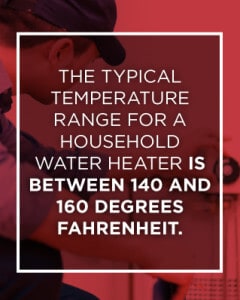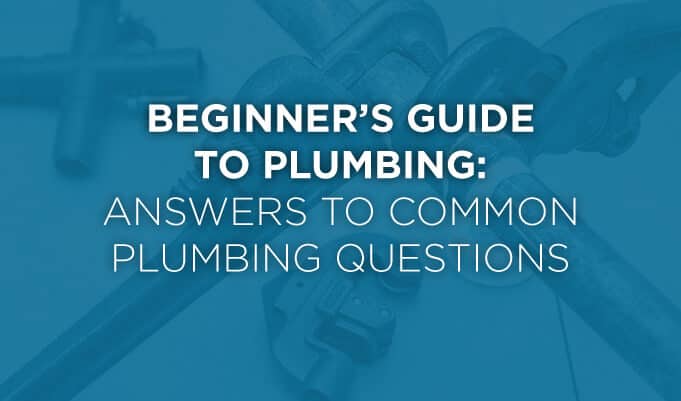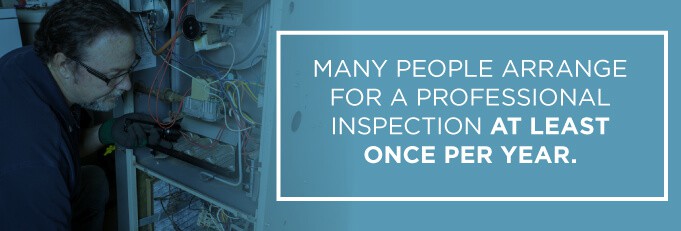Home plumbing systems directly affect our comfort and safety. Whether you own or lease a residence or business, an understanding of basic plumbing is a benefit even if you’re a beginner. Basic plumbing knowledge helps you do five important things:
- Avoid bad situations
- Make better decisions
- Achieve better efficiency
- Improve or upgrade operations
- Be familiar with system and components
A home’s plumbing system includes all the water utilities plus the heating, air conditioning, drainage and wastewater. Water moves predictably with gravity and can be manipulated with pressure. The heating-ventilation-air conditioning side of the system also involves air, but it is powered by some type of fuel such as natural gas for heat and coolant for cold air.
Any structure with plumbing has two separate sets of pipes. One distinct set brings the incoming water supply and the other system carries away the used water.
As professionals who respond to all kinds of emergencies, Home Climates likes to answer plumbing FAQs and share information that helps avoid crises. The more you know about basic plumbing, the better you can achieve consistent comfort and safety with no surprises or questions.
1. Where Does Water Come From?
The running water in a household or business comes either from a public supplier — such as a city — or from a well on private property. Government entities usually store water in big towers and then deliver it to homes through miles and miles of pipe.
Private supplies are more common in rural areas where homes and businesses do not have access to a public supply. The system is much smaller in scale and simpler: A pump draws water from a well for distribution inside the house or business.
Going deeper, water supplies in general are drawn from some surface sources such as rivers and lakes and from subsurface sources such as aquifers.
2. How Do I Cut Off the Water?
One of the most-valuable things to do as a homeowner or tenant is find the shut-off valve and know how to use it. Most structures have a main shutoff valve near the utilities on the ground floor, such as in the garage, basement or a closet, as well as another shutoff near the street or well that may be underground inside a manhole.
If water is spewing everywhere because something has sprung a leak, time will make a huge difference in damage and cost. The scenario will be better and less expensive if you can shut off the water immediately.
The main valve can be a number of styles, but the handle usually looks like a wheel with spokes in it or like a lever, typically black or red and sometimes marked “main.” You should turn a wheel to the right and a lever you would simply move in the opposite position. If there is any question, test your effort by trying to run water.
Each of the water-using appliances and utilities in your house will also have an individual shutoff valve of some kind. Toilets have a lever-looking handle at the base, near the wall. Sinks have a shutoff underneath, also near the wall and typically inside the cabinet or vanity. You can also turn off the water to the washing machine. Again, the idea is to be familiar with the valves and how they work, so you can act fast if needed.
Some experts recommend that you turn off water to the house or at least the washing machine before vacations or other extended absences so the danger of burst hoses or other water leaks is reduced.
3. What Should I Know About Water Pressure?

You can test the pressure delivered to your overall house with a water-pressure gauge that costs about $10 and attaches to an outside spigot. A pressure test tells you if the problem affects the entire household or if it’s isolated to one appliance or part of the home. If the gauge measures good pressure but the faucet still trickles and the toilet still fills too slowly, it could be the faucet’s aerator and the toilet’s fill valve causing the problem.
Whether you have public or private water supply, its pressure is regulated to enter the house and go to appliances. Generally, the household standard is 40-45 pounds per square inch and should not exceed 60 psi. It is possible to adjust the water pressure of any home, but the task is usually best handled by a professional, or at least by two people with great care.
For example, if a person has city water, it flows through the main pipe at a pressure so high it would literally blow out our sink, washing machine, toilet and other utilities. Usually you’d have a person inside or near the house to test the pressure as tiny, incremental adjustments are made to the regulator. Private wells usually have a pump that can be adjusted to increase the household pressure.
4. Are Small Leaks a Big Deal?
Besides annoying us, leaks cost money and can cause damage. According to the Environmental Protection Agency, a household can save up to 10% annually on its water bill by fixing leaks such as a drippy faucet or running toilet. Small leaks at the toilet, faucet, underground sprinkler and more add up to big totals.
It’s funny how if a faucet drips, we crank harder on the handle. Eventually, the handle breaks and we replace the whole faucet when ironically, it was a small rubber washer that caused the leak. Faucet washers, springs and O-rings can be easily removed and replaced to stop drippy leaks. It is worth noting the faucet type, so you can get the correct replacement, but sometimes washers and O-rings are not specific and come in an assorted package.
Hard-water deposits can build up on the faucet aerators. The aerator is usually a small tip that screws onto the end of a spigot and shapes the outgoing water. Many people think the tip looks like a tiny, round piece of window screen. If a faucet’s flow has slowed to a trickle, look closely at the aerator to see if it’s blocked with calcium carbonate or another mineral. If so, you can remove the aerator, clean it and reinstall it to improve flow at that faucet. If it is beyond cleaning or repair, it’s easy to find a compatible new aerator.
It is common for toilet parts to wear and break, which creates the wasteful irritant of a running toilet. You can easily replace the float valve, chain or plastic arm, rubber seal and other parts in order to stop the leak.
Learn more about plumbing services in central PA
5. How Do I Clear Clogs and Speed Up Drain Flow?
The two clogging agents that probably wreak the most havoc in plumbing are hair in the bathroom and grease in the kitchen, though soap, detergents and many other materials can cause clogs and slow drainage. For hair, you can buy drain screens at the home-improvement store to prevent hair from going down the drain. If hair is already in the drain, you can buy a plastic drain-cleaner tool, which features ragged edges that grab the hair as you move it in and out of the drain.
Residential awareness campaigns have been underway for years to educate people about the dangers of putting any kind of fat, oil or grease down the drain. It sticks to the interior of drainpipes and accumulates to the point where it interrupts water flow and can wreck things not only in homes but entire public systems. Commercial establishments have to undergo training about proper grease disposal, and now public entities are funneling that same information to residents.
It is vastly better for your plumbing to put any kind of fat, oil or grease and foods containing them into the trash rather than the garbage disposal or drain. Animal fat is especially harmful and can be easily wiped into the trash after it cools and congeals. It helps to throw away fatty scraps and other greasy foods such as butter, chocolate, cream and more. It is a best practice to occasionally pour several pots of boiling water down the drains to break down the fats, oils and greases that accumulate.
You can also plunge drains, but you will need a sink plunger. It’s fine to use a drain cleaner occasionally, but repeated use will degrade plumbing components. Frequent clogs probably indicate a need for some kind of repair or maintenance for your plumbing. Sinks often hold their clogs in the U-shaped portion of the pipe directly underneath them, and they can be easy to remove:
- Shut the valve to cut the sink’s water supply
- Place a bucket underneath the U-shaped pipe joint
- Unscrew the U-shaped pipe joint at both ends
- Remove it and allow pipe water to run into the bucket
- Clear clog and replace pipe part
Other remedies for clearing drains include various mixtures of baking soda and vinegar or citrus juices. You can also fill and drain the sinks and/or tub occasionally as a means of flushing the pipes.
6. What Prolongs the Life of a Toilet?
Nobody likes to think much about the toilet, yet it performs a function essential to comfort and health. It takes only one bad backup or expensive plumbing repair for people to become passionate protectors of the toilet, including education for young children and reminders for adults.
Always worth repeating: Nothing belongs in a toilet besides water, waste, biodegradable toilet paper and the occasional cleaner. That includes the allegedly flushable wipes that have become so popular in recent years. The so-called flushable wipes have prompted awareness campaigns and lawsuits due to damage from the clogs they cause. Keep a trashcan beside the toilet as a way of preventing the temptation to flush foreign objects that may include wipes, baby diapers, feminine-hygiene products and other items that can harm the plumbing.
It is another good practice to keep a plunger beside each toilet in the house. Plungers can prevent overflow, and plunging is the first course of action to try when a toilet won’t flush. If a plunger doesn’t work the first few times, you may need a toilet auger, which can reach and break up the clog or potentially grab and retrieve foreign objects such as a piece of clothing or child’s stuffed animal.
If you try everything and still have a weak flush or clogged system, a professional plumber can always help to determine your toilet problem. One of the most revealing tools is a video inspection, which will tell you if, for example, roots are interrupting the flow or drainage of your plumbing system.
7. Are Garbage Disposals Good or Bad?
Garbage disposals can be a nice luxury, but treating the disposal like a trash can may lead to big, smelly and costly problems. There are a number of foods that even the sharpest blades cannot process well:
- Banana peel
- Celery
- Corn husks
- Meat skin
- Melon rinds
- Eggshells
- Potato peels
- Stringy foods
Flush the disposal occasionally with a pot of boiling water to clear away debris and dissolve grease. The recommendation for general use is to begin running cold water in the disposal several seconds before use and keep it running for a few seconds after processing.
Garbage disposal services in central PA
8. How Hot Should Hot Water Be?

It is a good idea to include the water heater in regular, visual inspections of the plumbing system. Check it for leaks and corrosion. Leaks are most likely at the connections where cold water enters and hot water exits, and a bright flashlight will help you check the pipes, underside and other parts that are typically in a dark corner.
9. Can Technology Be an Advantage?
Some people would choose the simplest, least technologically advanced product available while others prefer to take full advantage of tech tools to help manage home utilities. Some systems offer a monitoring panel that gives detailed information about different aspects of the system, such as quantities and qualities of water and air, as well as electrical data.
Programmable thermostats represent a great addition for nearly any home. They are relatively affordable to anyone and have the ability to pay for themselves in a season with the money a household saves. There are many varieties available, but a programmable thermostat automatically adjusts the temperature down during sleep and away hours and back up, so the house is warm when people awaken or arrive home.
Home Climates offers the intelligent Nest thermostat, which you can also control from anywhere using a smartphone or tablet. We estimate that the Nest saves an average household about 20 to 30 percent per year on their utility bill.
10. Why Is Plumbing Maintenance Important?
The key to avoidance of costly repairs is regular inspection and maintenance. The more attention you pay to the overall system and its individual parts, the more likely it is you’ll detect any changes or variances before they become a problem.
Ideally, the utility systems of a home should be checked by the homeowner throughout each season, particularly before switching from air conditioning to heat or vice versa. Many people arrange for a professional inspection at least once per year, so the licensed plumber can spot issues early and run tests.
The number one maintenance homeowners can do is change the filter regularly in the heating and air conditioning system. It’s easy to do and an essential step for efficient operation and a long system life.
Partner With Experienced Professionals
Any good plumbing beginner’s guide should suggest a connection with a trusted, licensed plumbing consultant in the area. While it is good to have a number handy in case an emergency arises, that connection can also help you prevent problems.
Home Climates operates throughout central Pennsylvania with a knowledgeable, professional, well-trained team ready to serve your plumbing needs. From plumbing emergencies and to everyday plumbing repairs to a partnership for proactive prevention and upgrades, we can help.
We inspect, test and fix everything from toilets and sinks to the drainage and wells. Home Climates can manage fuel conversions, build geothermal systems, perform energy assessments, install tankless hot water heaters and keep your heat and AC systems in top running shape for comfort throughout the seasons. Let us know how we can serve you.












